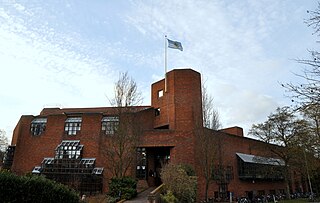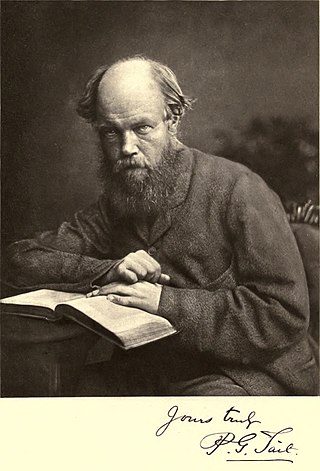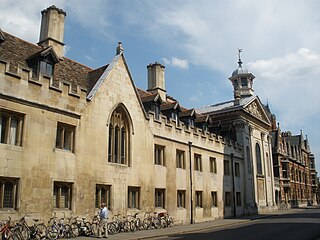Related Research Articles

Oxbridge is a portmanteau of Oxford and Cambridge, the two oldest, wealthiest, and most famous universities in the United Kingdom. The term is used to refer to them collectively, in contrast to other British universities, and more broadly to describe characteristics reminiscent of them, often with implications of superior social or intellectual status or elitism.

Thomas Gray was an English poet, letter-writer, classical scholar, and fellow at Pembroke College, Cambridge. He is widely known for his Elegy Written in a Country Churchyard, published in 1751.

The University of Cambridge is composed of 31 colleges in addition to the academic departments and administration of the central university. Until the mid-19th century, both Cambridge and Oxford comprised a group of colleges with a small central university administration, rather than universities in the common sense. Cambridge's colleges are communities of students, academics and staff – an environment in which generations and academic disciplines are able to mix, with both students and fellows experiencing "the breadth and excellence of a top University at an intimate level".

Peterhouse is the oldest constituent college of the University of Cambridge in England, founded in 1284 by Hugh de Balsham, Bishop of Ely. Peterhouse has around 300 undergraduate and 175 graduate students, and 54 fellows. It is quite often erroneously referred to as Peterhouse College, although the correct name is simply Peterhouse.

Selwyn College, Cambridge is a constituent college of the University of Cambridge. The college was founded in 1882 by the Selwyn Memorial Committee in memory of George Augustus Selwyn (1809–1878), the first Bishop of New Zealand (1841–1868), and subsequently Bishop of Lichfield (1868–1878). Its main buildings consist of three courts built of stone and brick. There are several secondary buildings, including adjacent townhouses and lodges serving as student hostels on Grange Road, West Road and Sidgwick Avenue. The college has some 60 fellows and 110 non-academic staff.

Robinson College is a constituent college of the University of Cambridge. Founded in 1977, it is one of the newest Oxbridge colleges and is unique in having been intended, from its inception, for both undergraduate and graduate students of both sexes.

Peter Guthrie Tait was a Scottish mathematical physicist and early pioneer in thermodynamics. He is best known for the mathematical physics textbook Treatise on Natural Philosophy, which he co-wrote with Lord Kelvin, and his early investigations into knot theory.

Corpus Christi College is a constituent college of the University of Cambridge. From the late 14th century to the early 19th century it was also commonly known as St Benet's College.

Queens' College is a constituent college of the University of Cambridge. Queens' is one of the older colleges of the university, founded in 1448 by Margaret of Anjou. Its buildings span the River Cam with the Mathematical Bridge and Silver Street connecting the two sides.

Darwin College is a constituent college of the University of Cambridge. Founded on 28 July 1964, Darwin was Cambridge University's first graduate-only college, and also the first to admit both men and women. The college is named after one of the university's most famous families and alumni, that of Charles Darwin. The Darwin family previously owned some of the land, Newnham Grange, on which the college now stands.

Sir Malcolm Stanley Bradbury, was an English author and academic.

Tom Brown's School Days is a novel by Thomas Hughes, published in 1857. The story is set in the 1830s at Rugby School, an English public school. Hughes attended Rugby School from 1834 to 1842.
Porter Square is a neighborhood in Cambridge and Somerville, Massachusetts, located around the intersection of Massachusetts Avenue and Somerville Avenue, between Harvard and Davis Squares. The Porter Square station serves both the MBTA Red Line and the Commuter Rail Fitchburg Line. A major part of the Lesley University campus is located within the Porter Square area.

The University of Edinburgh, the majority of colleges at the universities of Cambridge, Durham and Oxford, as well as newer collegiate universities such as Lancaster University, University of York, and older universities like University of Bristol and St David's College, have members of staff called porters. There is normally a head porter and a team of other porters. Their precise job roles vary from college to college. Oxbridge porters are highly sought after jobs. Porters work in a section of the college called the porters' lodge, at the main entrance.

A May Ball is a ball at the end of the academic year that takes place at any of the colleges of the University of Cambridge. They are elaborate and lavish formal affairs, requiring black tie or sometimes white tie, with ticket prices ranging from around £100 to as much as £640 for a pair of dining tickets at Trinity. May Ball budgets can exceed £100,000; a report by the student newspaper Varsity in 2016 found that the budget for the 2015 Trinity ball was £286,000. The balls are held in the colleges, starting around from 6-9 p.m. and lasting until well after dawn. "Survivors photographs" are taken of those who last until morning. Other colleges frequently hold winter balls, such as the popular Selwyn Snowball, who recently had acts such Tinchy Stryder and Mumford and Sons headlining.

Mary Marshall was an economist who in 1874 had been one of the first women to take the Tripos examination at Cambridge University – although, as a woman, she had been excluded from receiving a degree. She was one of a group of five women who were the first to be admitted to study at Newnham College, the second women's college to be founded at the University.

Porterhouse Blue is a novel written by Tom Sharpe, first published in 1974. A satirical look at Cambridge life and the struggle between tradition and reform, Porterhouse Blue tells the story of Skullion, the Head Porter of Porterhouse, a fictional college of Cambridge University.

Trumpington Street is a major historic street in central Cambridge, England. At the north end it continues as King's Parade where King's College is located. To the south it continues as Trumpington Road, an arterial route out of Cambridge, at the junction with Lensfield Road.

Thomas Ridley Sharpe was an English satirical novelist, best known for his Wilt series, as well as Porterhouse Blue and Blott on the Landscape, all three of which were adapted for television.
References
- ↑ Thackeray, William Makepeace. "II. A Pedigree and other Family Matters". THE HISTORY OF PENDENNIS.
Pendennis, by this time, had his handsomely framed and glazed, and hanging up in his drawing-room between the pictures of Codlingbury House in Somersetshire, and St. Boniface's College, Cambridge, where he had passed the brief and happy days of his early manhood.
- ↑ Varsity, October 2002
- ↑ "IA NST Maths, 2008 Paper 2, Question 11X" (PDF). Archived from the original (PDF) on 25 September 2015. "IA NST Maths, 2009 Paper 1, Question 12X" (PDF). Archived from the original (PDF) on 25 September 2015. "IA NST Maths, 2010 Paper 1, Question 12X" (PDF). Archived from the original (PDF) on 25 September 2015. "IA NST Maths, 2011 Paper 1, Question 12X" (PDF). Archived from the original (PDF) on 25 September 2015.
- ↑ Selby, Mary. (1998). Gargoyles and port. London: Black Swan. ISBN 0-552-99763-3. OCLC 38886188.
- ↑ Darkness at Pemberley at England Have My Bones
- ↑ "Tom Browning's Schooldays by Joel".
